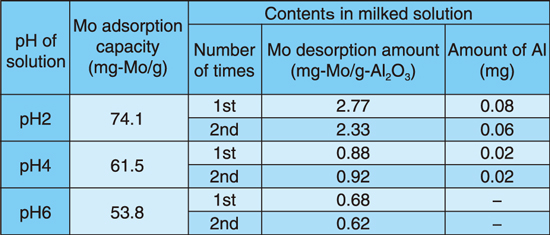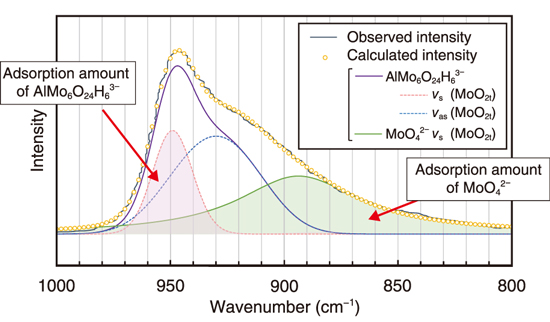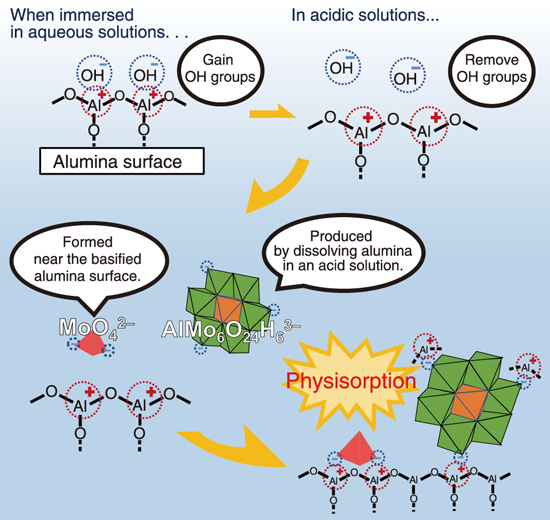Table 4-1 Mo adsorption capacity of alumina and its element content in milked solution


Fig.4-15 Adsorption of molybdate ions in the Raman spectrum (for pH 4)

Fig.4-16 Mechanism of molybdate ion adsorption in alumina
Technetium-99m (99mTc), a representative nuclide for radiopharmaceutical, is a decay product of molybdenum-99 (99Mo). At present, 99Mo is produced by the fission of uranium (i.e., the fission method), but the activation method is attracting attention from the viewpoint of nuclear security. This method produces 99Mo via the neutron irradiation of 98Mo. However, compared to the fission method, the activation method can produce only a small amount of 99Mo. Extraction of 99mTc from 99Mo is based on the phenomenon that only 99mTc is eluted upon passing saline through alumina (Al2O3) adsorbed 99Mo (milking). To extract an amount of 99mTc equivalent to that extracted by the fission method, it is necessary to improve the Mo adsorption capacity of alumina. In this work, we focused on the molybdate ion, which is the Mo form adsorbed on alumina, and elucidated the adsorption mechanism.
First, alumina was immersed in solutions of different pH containing molybdate ions and was milked by a saline solution. More Mo was adsorbed at lower pH values, but the milked solution contained more Mo and Al (Table 4-1). Next, the amount of OH groups on the alumina surface increased at pH 4 and pH 6 compared to that before adsorption, but almost no change was observed at pH 2. Therefore, the OH groups on the surface increased upon immersion in the solution, but the formation of OH groups was suppressed when a large amount of Mo was adsorbed. Furthermore, the adsorbed molybdate ion species were investigated and were found to be ions containing Mo(VI). Finally, the adsorbed molybdate ion species were identified as MoO42- and AlMo6O24H63-, and these adsorption amounts were compared (Fig.4-15). From the increasing content of Mo and Al in milked solution with lower pH and the adsorption amount of two molybdate ion species, it was estimated that AlMo6O24H63- has weak adsorbability.
Based on this result, we elucidated the Mo adsorption mechanism in alumina (Fig.4-16). The approaches found to improve the Mo adsorption capacity are as follows: 1) increasing the amount of surface OH groups by enlarging the surface area or controlling the crystal phase, and 2) optimizing the Mo solution for adsorption as MoO42- ions. The results of this work will contribute to improve the adsorption property of alumina and the practical application of the activation method with excellent nuclear security.
This work was supported by JSPS KAKENHI Grant-in-Aid for Scientific Research (B) (JP17H04256).
(Yoshitaka Fujita)
<Previous: 4-6 | Next: 5 Neutron and Synchrotron Radiation Research>